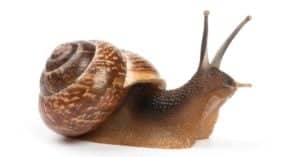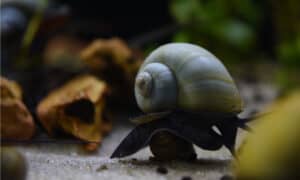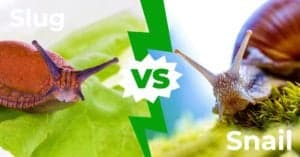Found in freshwater, saltwater, and on land, snails can be found just about anywhere! Because they are members of the mollusk family, their bodies are soft and lack a backbone. That’s why snails are so well-known for their shells since they protect their soft bodies.
In this article, we’ll be focusing on the water snail in particular. Common types of water snails are the Pond snail, the Ramshorn snail, and the Mystery snail. Pond and Ramshorn snails may be found in a variety of freshwater aquatic environments worldwide, including ponds, swamps, and rivers. Mystery snails can be found in tropical climates such as Florida, Hawaii, South America, Central America, and the West Indies. They are highly suited to climates that oscillate between drought and strong rains.
Curious to find out more about water snails? We’ve gone the rundown on what do water snails eat and why you should beware of them!
What Do Water Snails Eat?
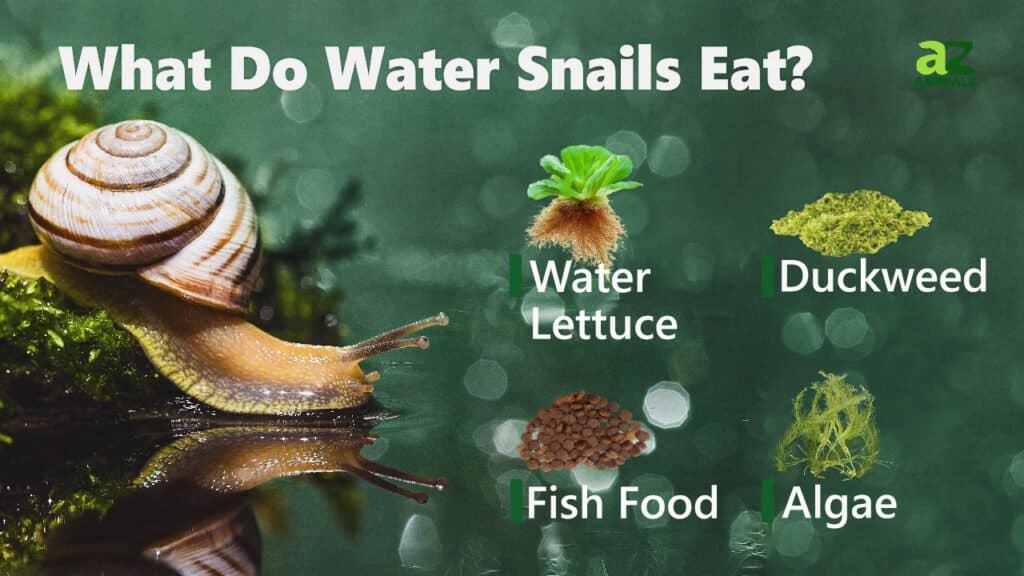
Water snails eat a diet that consists of algae, decaying plants, and other foods. They are predominately herbivores with the majority eating algae. However, as mentioned, many are detritivores that obtain nutrients from decaying or dead plants, while others are filter feeders.
Water snails will eat a broad variety of items in their native habitat. As a result, they ingest everything essential that they need to gain adequate vitamins and minerals for a healthy living. Many of a snail’s nutritional needs may be met by consuming dead plants, which contain sufficient vital nutrients.
Here is a complete list of the foods that water snails love to eat:
- Aquatic plants
- Algae
- Fruits, such as grapes, melons, pumpkins, apples, and pears
- Vegetables such as lettuce, carrots, and snap peas
- Commercial foods
Water snails are an incredibly popular addition to many aquarium tanks. They can swiftly adapt and work with practically any fish in the aquarium. Most breeds are excellent at removing algae and cleaning food scraps from the base of the aquarium.
How Do Water Snails Find and Eat Their Food?
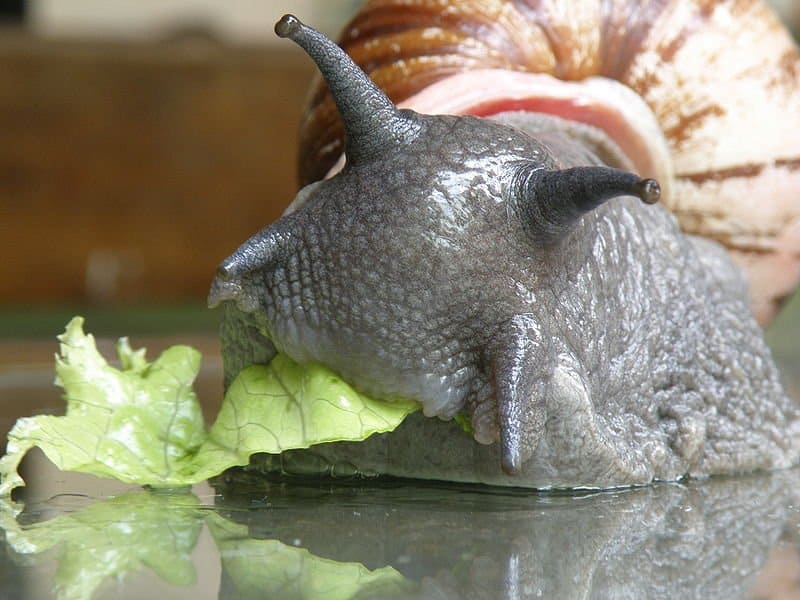
Water snails graze over rocks and sediments to find algae to eat.
©Dcschmidt – Public Domain
Water snails are labeled as grazers. That means that, in the wild, they will graze over rocks, reefs, and sediment in order to find algae to eat up. Water snails that live in captivity will graze in the same ways as their wild brethren.
Although water snails cannot hear, they can detect surrounding food sources. Cephalic tentacles on the lower half of their bodies serve as scent sensors. This means that they serve as their nose. Water snails, in fact, are more sensitive to scents than humans even are. This capacity enables them to locate food from a distance of many meters away.
Water snails also have a tongue called a radula. It has the appearance of a ribbon. A snail’s radula contains several minuscule teeth. These help them break down their food into smaller pieces.
Sulphuric acid may be produced by certain water snails. This acid aids in the dissolution of hard materials such as the shells or clams of other organisms on which water snails feed. As a result, the water snails can consume their food more easily.
Are Water Snails Harmful to Humans?
Did you know that water snails can actually harm humans? Yes, you read that correctly. The water snail can actually kill humans. But, not in the way you might think.
Water snails are a popular dish among many people in many different cultures. Water snails are considered a delicacy in France, and are prepared differently in different nations, which may involve frying them. They are known as a dish called escargot.
The water snail does not have the power to hurt humans on its own. However, if it gets into contact with a parasitic worm, it becomes dangerous. A parasitic worm has the ability to infect both the snail and its eggs. The infection is called Schistosomiasis. When individuals bathe in the water or consume water contaminated with infected eggs, it might result in serious sickness.
Infected eggs have the ability to pierce the skin and enter blood vessels. This typically occurs in tropical and subtropical rivers and lakes across the world. According to reports, this illness kills over 10,000 individuals worldwide each year. It is frequent in areas where the water quality is poor, either due to a lack of sanitation or due to untreated water.
There is also a toxic sea snail known as the Cone snail. It may spread poison to other organisms through its teeth. It is reported that a single sting might be fatal. The Cone snail, luckily, is unlikely to be encountered since they are nocturnal.
How Does The Water Snail Diet Impact the Ecosystem
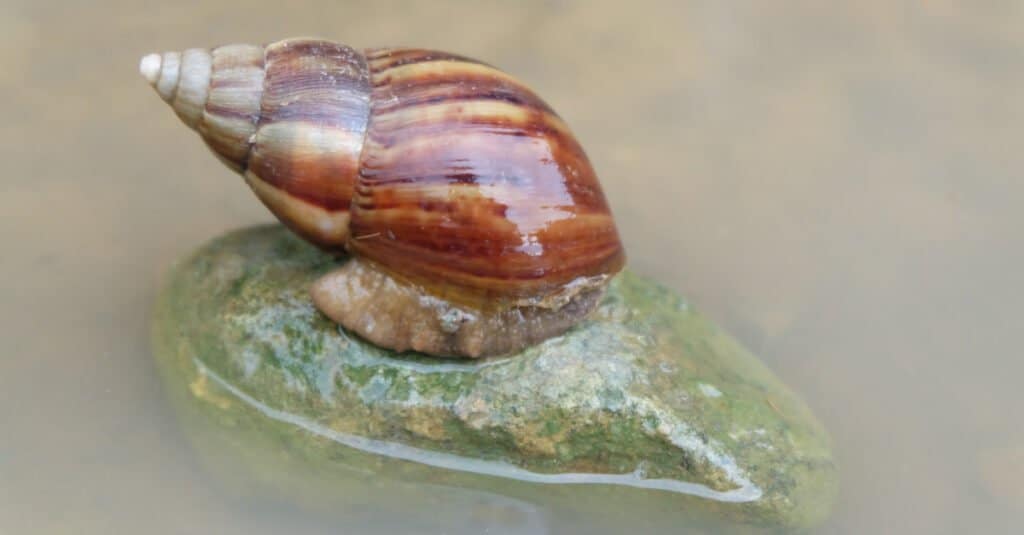
A water snail’s shell provides protection for the snail.
©Needatang/Shutterstock.com
Water snails play a pretty large role in the ecosystem, despite their small size. They serve as an essential source of food for other species. Since there are so many snails living in the waters across the world, they significantly contribute to the nutrient exchanges in the water. They also maintain water quality and clean habitats for other bottom-dwelling species such as freshwater insects mostly by suppressing algae development.
What Eats Water Snails in the Wild?
Water snails are preyed upon by many animals, such as ducks, fish, crayfish, and turtles. They are a very important food source for many animals on both land and sea. There is even a species of vulnerable turtle that lives in rivers that drain into the Gulf of Mexico that feeds extensively on snails. Water snails are also an important food source for the snail darter, a tiny, endangered fish found in the Tennessee River system. As you can see, water snails play a crucial part in the aquatic food chain, whether they are consumed by turtles, fish, or hundreds of other animal species, humans included.
The photo featured at the top of this post is © bluejava1/Shutterstock.com
Thank you for reading! Have some feedback for us? Contact the AZ Animals editorial team.



